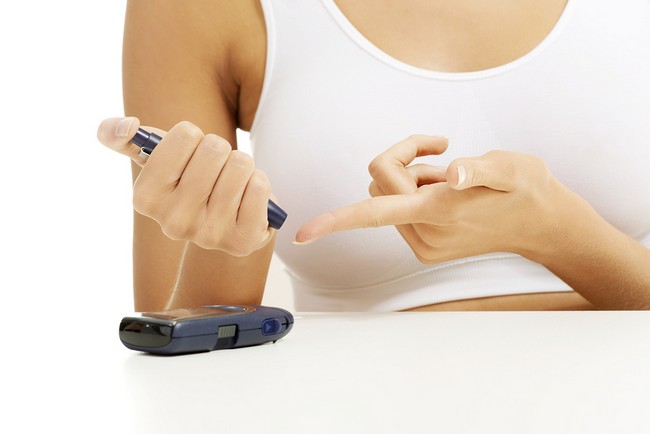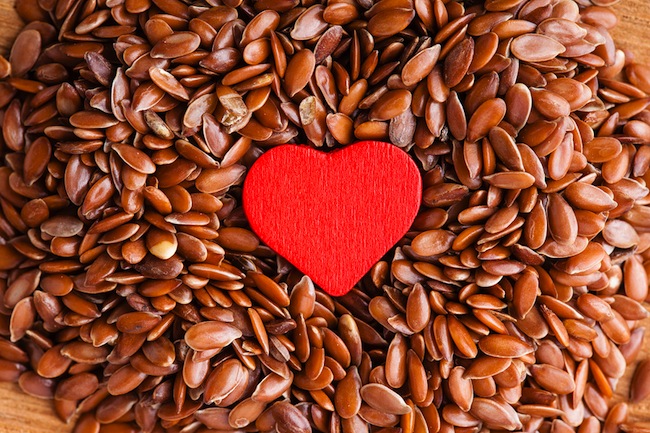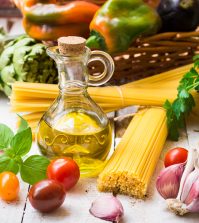- Make It Yourself Lavender Heart-Shaped Bath Bombs!
- 20 Things You Never Knew About “Down There”
- 12 Best Foods For Those Suffering From Arthritis Pain
- 12 Personal Hygiene Mistakes Almost Everyone Makes (Mom Never Told You About #4!)
- 15 Medicinal Plants And Herbs From The Cherokee People
- 12 Mind-Blowing Benefits Of Drinking Coconut Water During Pregnancy
- 12 Outstanding Winter Foods That Won’t Fatten You Up Like A Christmas Turkey
25 of the Top Foods to Control Diabetes (You Won’t Even Believe #19!)

Photo credit: bigstock.com
If you or someone you love suffers from diabetes, you know what a struggle it can be trying to decide what to eat every day. There are so many tasty, delicious foods out there, but many of them are not good for you.
Diabetics who use professional advice from dieticians and have nutritional supervision have a much better chance of stabilizing their blood sugar levels, and therefore avoiding the complications that can arise from this disease.
Diabetics should avoid snacking and eat meals at regular times throughout the day to avoid any sharp increases in blood sugar levels.
So what are the best foods that can help you control diabetes? We have made a list of 25 of the best foods that will do exactly that. These are all common, everyday foods, so you don’t have to make a trip to a special store to get them.
Keep reading and get ready to make your next grocery list!
1. Collard Greens
These dark green, leafy vegetables are a terrific source of lutein, which is an important carotenoid for the eyes. This is vital for diabetics, as they can develop severe eye problems as a complication of their disease. Collard greens are also a great source of fiber, important B vitamins, calcium, vitamin C, and iron.
2. Olive Oil
Olive oil contains no carbs, so it cannot raise blood sugar levels. One of the interesting things about olive oil is that it slows the absorption of foods that are eaten with it. This oil is also rich in omega-3 and omega-9 fatty acids, which keep the blood vessels flexible. Because it won’t increase blood sugar, it reduces the resistance of insulin.
3. Sweet Potatoes
Sweet potatoes are so good and naturally sweet that for diabetics, they can be dessert! Simply choosing a sweet potato instead of a regular white potato can lower your blood sugar by 30 percent. These orange potatoes are packed with healthy nutrients and fiber, almost 40 percent of which is the type of fiber that slows digestion and lowers cholesterol levels. Sweet potatoes are also super rich in carotenoids, which play a vital role in helping the body respond to insulin. They are also full of chlorogenic acid, a plant compound that helps to reduce insulin resistance.
4. Cinnamon
This is one of the best spices around for controlling blood sugar levels. Numerous studies show that consuming between one and three teaspoons of cinnamon each day has a positive effect on blood glucose levels. Cinnamon will also make your cells more receptive to insulin. One study showed that diabetics who received a cinnamon extract over a 40-day period had lower blood sugar levels after eating as well as substantial improvements in their overall heart health.
5. Peanut Butter
See? A diet made to help control diabetes does not have to be bland and boring! Peanut butter contains healthy monounsaturated fats, which help to control blood sugar levels. One study found that eating a tablespoon or two of peanut butter dulled the appetite for as long as 2 hours. It might even help you drop a few pounds if it can satisfy your hunger until dinner. Read more how to make peanut butter.
Continue to Page 2

Photo credit: bigstock.com
6. Green Tea
This drink is so loaded with healthy benefits, that it’s hard to know where to start. Green tea has an important antioxidant called EGCG, which improves the flexibility of blood vessels and stabilizes blood sugar levels. The University of Pennsylvania did a study that showed that this antioxidant prevents a sharp rise in glucose after a high-carb meal and reduces blood sugar levels overall. Try adding 3 to 4 cups each day of freshly brewed green tea.
7. Seeds
All types of seeds, including sunflower, pumpkin, and sesame seeds, are full of healthy fats, protein, and fiber. All of these things work together to keep your blood sugar low and fight off heart disease. Seeds have sterols, which naturally lower cholesterol levels. Fill a small tin (such as an Altoids tin) with some healthy seeds and stick it in your purse, pocket, or glove box in case you have a snack emergency. You can also forgo the croutons on your salad and sprinkle some pumpkin seeds or sunflower seeds on it for a healthy, tasty change of pace!
8. Legumes
Legumes include foods such as peas, beans, lentils, and chickpeas. These foods are low in fat and calories but are rich in fiber, protein, and tons of healthy vitamins and minerals. Fiber slows the rate at which sugar is absorbed into the blood, so it reduces the overall glycemic load. Think bean burritos for dinner, add a handful of beans to a salad, or add some peas to your favorite soup. You can’t go wrong with legumes!
9. Nuts
This list just gets better and better, doesn’t it? Nuts are high in both fiber and protein, which makes them a “slow burning” type of food that’s a good choice when it comes to blood sugar levels. Yes, nuts contain quite a bit of fat, but it’s the healthy, monounsaturated kind. Roasting really brings out the flavor in nuts, which makes them terrific as a snack, or as an addition to many entrees and vegetable dishes. Try adding just one ounce of your favorite nut to your daily diet.
10. Green Veggies
The British Medical Journal conducted a study in which green vegetables, such as spinach, cabbage, lettuce, kale, Swiss chard, celery, cucumbers, and green beans, were found to contain a special type of carbohydrate that stimulates the release of hormones that reduce appetite. These scientists also found that green vegetables in particular improved insulin sensitivity, which helps to regulate glucose levels in the blood. They also have healthy antioxidants, and many vegetables are rich source of magnesium, a mineral that is vital to controlling blood sugar.
Continue to Page 3

Photo credit: bigstock.com
11. Flax Seeds
We already talked about the health benefits of seeds, but flax seeds deserve a special mention. These shiny, brown, very thin seeds are rich in fiber, full of healthy fats and omega-3s, and are a great source of magnesium. Flax seeds need to be ground up to release their active compounds. They can also go rancid fairly quickly, so buy the whole seeds in bulk. Store them in an airtight container in the freezer, then grind as needed. Try adding two or three teaspoons each day to your yogurt, cereal, meatloaf, or bread.
12. Oatmeal
There is nothing like a big warm bowl of oatmeal to start the day off right. Oats are full of that healthy fiber you want to eat more of because it slows the absorption of glucose. It also has high levels of important antioxidants, which can stabilize blood sugar levels.
13. Eggs
Who doesn’t love eggs for breakfast?! This is a terrific source of inexpensive protein that can’t be beat. In fact, eggs are such a great source of protein that nutritionists use eggs to rank all other types of protein! Contrary to popular belief, eggs will not raise your cholesterol levels, and they keep you feeling full for hours. You can also hard boil eggs for a quick snack, or to slice in your lunchtime salad.
14. Red Foods
Foods that are rich in quercetin are generally red in color. One study out of Finland found that men who consumed a large amount of food containing quercetin had a 20 percent lower death rate related to diabetes or heart problems. Great sources of quercetin are red grapes, tomatoes, red onions, and all types of red berries, such as strawberries.
15. Carrots
Did you hear that carrots spike blood sugar levels? This statement isn’t entirely true. Although carrots do contain a type of sugar that is absorbed into the blood quickly, they actually contain very little sugar. This is good news if you have been avoiding carrots because of this information. Carrots are high in beta-carotene, which is linked to both a lower risk of diabetes as well as better control of your blood sugar levels. If you don’t care for them raw, try roasting them or steaming them. You can also boil them and mash them like potatoes for a change of pace.
Continue to Page 4

Photo credit: bigstock.com
16. Berries
This list is simply full of flavor! Think of berries as Mother Nature’s M&Ms. They are colorful, sweet, and incredibly satisfying. Berries are also loaded with fiber and tons of antioxidants. Red berries and blueberries also have something called anthocyanins, which help to lower blood sugar levels by stimulating the production of insulin. Keep bags of frozen berries on hand for snacking or for adding to meals so you can enjoy their sweet healthy goodness any time of the year.
17. Fatty Fish
An unfortunate truth is that those who suffer from diabetes are twice as likely to suffer from heart disease. Eating a diet high in omega-3 fatty acids, like the kind found in fatty, cold-water fish, can help to lower LDL (bad) cholesterol while improving your good cholesterol. All seafood is a great source of omega-3s, but cold-water fatty fish are on the top of the list, so add more salmon, sardines, tuna, cod, trout, herring, mackerel, and halibut to your life. Try eating at least 3 servings each week.
SEE ALSO: Top 12 Herbs and Spices to Control Type 2 Diabetes (We Love #9!)
18. Grass Fed Beef
Of course, you probably already know that beef contains protein, iron, and important B vitamins, but did you know that beef also contains an important compound called conjugated linoleic acid, or CLA for short? Studies show that CLA corrects the improper use of blood sugar by the body, fights heart disease, and can even help fight against certain types of cancer. One study out of Norway showed that when they added a few grams of CLA to the daily diet of more than 180 subjects, they not only lost about 9 percent of their body weight in one year, but that they had more normal blood sugar levels overall. Always eat beef that has been processed as little as possible in order to get the most CLA. Look for grass fed, organic, free range beef. It will cost more, but it is so worth it!
19. Dark Chocolate
If you think a diabetic diet means giving up all treats, we have a sweet surprise for you! Researchers from Tufts University found that dark chocolate improved cell sensitivity to insulin, therefore improving the chances of avoiding diabetes. Dark chocolate, with a minimum of 60 percent cocoa content, lowers blood pressure as well as the LDL (bad) cholesterol in the body. It can also improve and strengthen blood vessels. Don’t overdo it. This isn’t permission to eat as much dark chocolate as you like, but enjoy one delicious ounce every day and feel good about it!
20. Bitter Melon
Sometimes called bitter apple or wild cucumber, this strange fruit comes to us from South America and East Africa. It looks a bit strange, like a lumpy green banana, but it contains multiple medicinal compounds. Studies show that the three active ingredients in this melon, charantin, vicine, and polypeptide-p, all appear to have the ability to lower blood sugar levels. If you can find it at your local health food store, give it a try. There are dozens of recipes online.
Continue to Page 5

Photo credit: bigstock.com
21. Avocados
Wow, first beans, now avocados. Can you say Mexican food for dinner tonight?! It’s true that avocados are full of fat, but it’s the healthy monounsaturated type of fat that you want more of. A diet high in these types of healthy fats can reverse insulin resistance, which means more stable blood sugar levels. In fact, studies show that avocados slow overall digestion and help to keep your blood sugar from spiking after meals. Try mashing some avocado on your sandwiches instead of mayo.
22. Barley
By eating barley instead of white rice, you can cut the rise in blood sugar by as much as 70 percent! You can also keep your blood sugar more stable, as well as lower, for hours. Barley is full of soluble fiber, which is the kind you want to eat plenty of, as it dramatically slows the digestion process and the absorption of carbs. Even brown rice, good as it is, cannot hold a candle to barley. There are quick cooking varieties at supermarkets, so give it a try.
23. Apple Cider Vinegar
OK, so this isn’t really a “food,” so to speak, but it really needs to be mentioned here. Apple cider vinegar has been shown in several studies to lower blood sugar levels dramatically. One study, done in 2007, showed that when subjects with type 2 diabetes consumed two tablespoons of apple cider vinegar before they went to bed, they had lower glucose levels in the morning by as much as 6 percent. Try adding one tablespoon of apple cider vinegar to a glass of water (add a touch of lemon or honey to help with the taste) and drink it twice each day. What do you have to lose, other than high blood sugar?
24. Okra
Sometimes called lady’s fingers or gumbo, this vegetable has been shown in studies to reduce the absorption of glucose and lower blood sugar levels in diabetic rats. Okra has fiber in it as well, so it certainly won’t hurt you and who knows? Perhaps you will find that it lowers your blood sugar levels as well!
25. Vitamin C Rich Foods
Studies show that most diabetics have lower levels of vitamin C in their bodies than the general population. Add more foods that are rich in this important immune-strengthening vitamin, including kiwi fruit, grapefruit, tomatoes, berries, oranges, apples, and red bell peppers.
Please note that you should never stop taking your medication without your doctor’s approval. Eating a healthier diet, like the one above, might allow you to lower the amount of medication you are now taking. Talk to your doctor about this list and what you can expect from following it. Sometimes controlling your diabetes is as simple as eating right.
References:
































